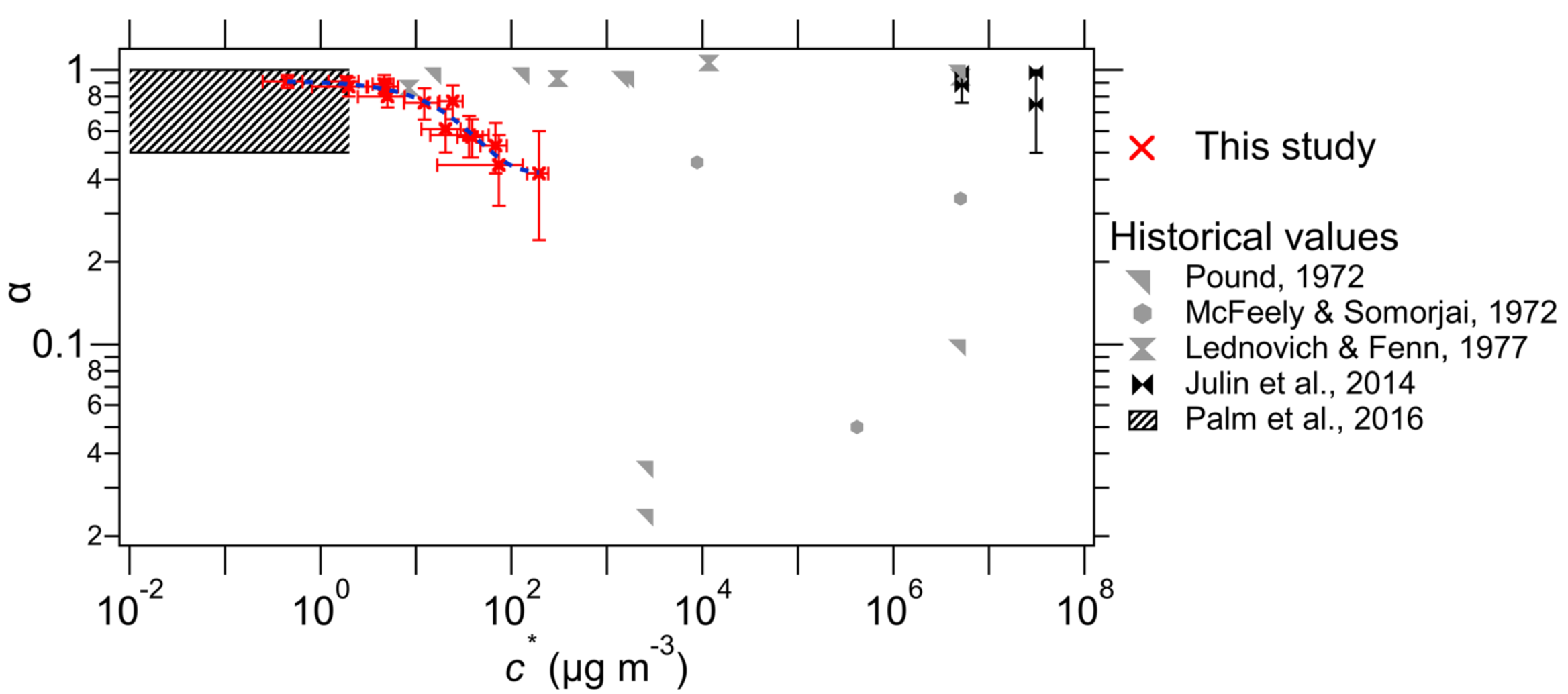Accurately quantifying gas/particle partitioning in environmental chambers despite wall losses
Submitter
Jimenez, Jose-Luis — University of Colorado
Area of research
Aerosol Processes
Journal Reference
Science
For decades, environmental “smog” chambers have been used to determine how much secondary organic aerosol (SOA) can form from certain gaseous emissions and to study its chemistry. But in recent years it has become clear that gases can stick to the walls of the bag, which can change the results of particle chamber experiments. We provide an experimental method for studying aerosol formation from gases while taking into account their losses to the walls.
Impact
This experimental method for studying gas/particle partitioning in environmental chambers allows us to track the fates of molecules as gases and particles through a chamber experiment. We can examine fundamental behaviors of gas- and particle-phase compounds and extract a measurement of the aerosol mass accommodation coefficient. The accommodation coefficient is a key parameter in aerosol models that represents the probability that a gas molecule will stick in the aerosol.
Summary
Gas/particle partitioning is a critical atmospheric process that remains extremely difficult to measure in the atmosphere, and even in atmospheric environmental chambers. In this work we oxidize a series of precursors to produce multiple low-volatility compounds. By injecting different amounts of liquid organic seed aerosol into the chamber and tracking the rate of decrease of the gases in high time resolution, we can model the gas/particle partitioning while including both gas- and particle-phase wall losses. Different amounts of condensational sinks show different rates of gas-phase decrease, indicating that the effect of gas/particle partitioning is clearly separable from gas/wall partitioning and therefore measurable in chamber experiments. Using our model, we also extract a measurement of the mass accommodation coefficient for multiple different compounds. Because older measurements of the accommodation coefficient vary by many orders of magnitude, our experiment offers additional precision beyond what was previously available, and suggests the accommodation coefficient is close to 1 for organic aerosol.


